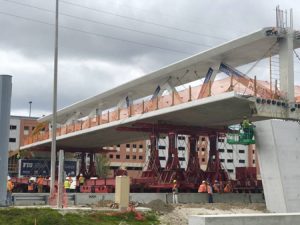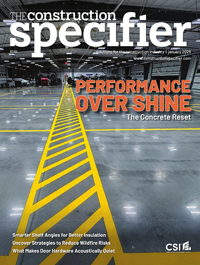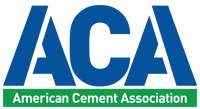Errors found in the design of collapsed Florida bridge

Photo courtesy PRNewsfoto/FIU
The National Transportation Safety Board (NTSB) that is investigating the March 2018 pedestrian bridge collapse in Miami said in a preliminary report errors were made in the design of the 53-m (174-ft) span. Cracking observed prior to the collapse of the structure at Florida International University (FIU) is consistent with those mistakes.
Six people died and eight others were injured when the bridge collapsed in March 15, 2018. Eight vehicles were crushed in the collapse, and seven of them were occupied.
According to the NTSB update, errors made were in the design of the northernmost nodal region of the span where two truss members were connected to the bridge deck. The design errors resulted in an overestimation of the capacity (resistance) of a critical section through the node, and, an apparent underestimation of the demand (load) on that section.
The Turner-Fairbanks Highway Research Center (TFHRC), part of the Federal Highway Administration (FHWA), conducted tests and examinations of concrete and steel samples taken from the bridge following its collapse. The specimens tested by TFHRC personnel met the project’s build plans specified minimum requirements. Findings from the materials tests include:
- concrete core specimens from the bridge deck and bridge canopy met the compression requirements in the project plans;
- the design plans specified concrete used for the project had to be in accordance with the Florida Department of Transportation (FDOT) specifications, all specimens from the bridge deck and bridge canopy were within the specified range for total air content; and
- tension test results of size 5, 8, and 11 steel reinforcing bars revealed all met minimum yield and tensile strengths and percent elongation at fracture, for their respective sizes, size 7 bars could not be tested due to collapse-induced deformation.
The NTSB’s investigation of the bridge collapse is ongoing and the information contained in the investigative update is preliminary and will be supplemented or corrected as the investigation progresses. As such, no conclusions about probable cause should be drawn from the information contained in the investigative update.



